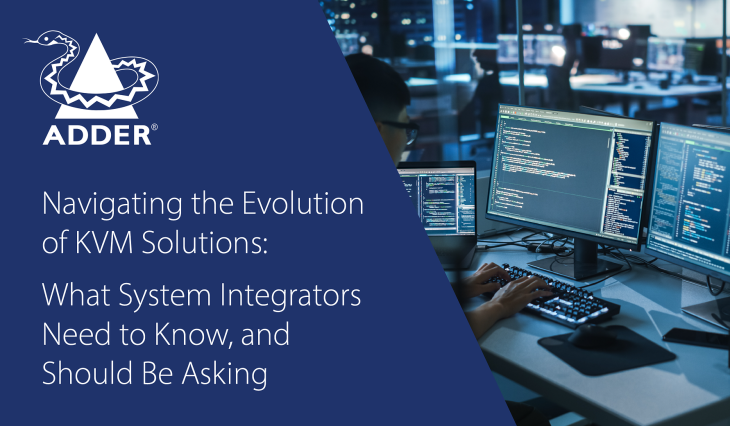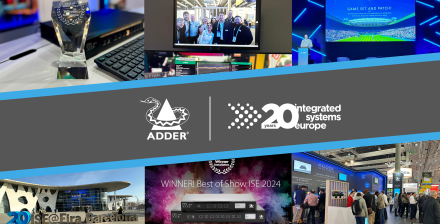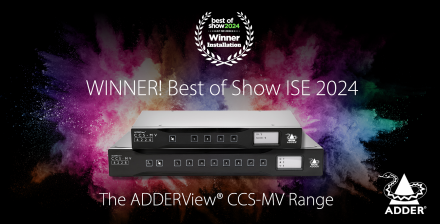Want to know more about KVM and what it can do for you? Click Here
Blogs 21 February 2024
Navigating the Evolution of KVM Solutions: What System Integrators Need to Know, and Should Be Asking

As the curtains draw on another successful Integrated Systems Europe (ISE), we reflect on some of the conversations had over the past few days. A large share of those visiting the Adder stand were interested to find out more about KVM solutions for the control room. They visited Adder with the goal of avoiding the complexity, compromises, and hidden costs that they have experienced elsewhere.
As system integrators survey the landscape of KVM solutions for the control room, they are realizing that the fundamentals of high performance KVM are often overlooked.
Here are six topics that they have become very mindful about in the past year, and how IP KVM can support them:
❌Off the shelf AVoIP codecs - They were not designed for text, or the fine detail, required by users of desktop computing applications. And they are anything but ergonomic or human-centric.
✔️ When selecting a KVM solution for the control room, it is important to delve deeper into the capability of a codec to ensure it meets the intricate demands of the user.
❌Flexibility creating complexity for the operator
Summed up by the comment ‘There is too much focus on ‘anything, anywhere’ and not enough focus on ‘the right thing, in the right place, at the right time’.
✔️It is critical to strike a balance between flexibility and operational simplicity, ensuring that resources are available where and when they are needed most.
❌Limited support for USB peripherals
Yes, the K is for Keyboard, and the M is for Mouse, but the bar has been set much higher than that for over a decade.
✔️With KVM, you can expand your peripheral repertoire beyond the basics to accommodate the diverse needs of modern users – think webcams, joysticks, and so much more.
❌Unscalable performance
Some integrators have been caught out; what works in the exhibition demo or PoC system, does not always scale up to a real-world scenario with tens of users.
✔️The flexibility of IP KVM allows integrators to anticipate and address potential scalability hurdles, ensuring that solutions seamlessly transition from proof of concept to real-world deployment.
❌A general lack of robustness and resilience
The potential risks to control room operations are too high.
✔️Elevate the reliability of control room operations by investing in robust and resilient KVM systems that can withstand the rigors of demanding environments.
❌ Hidden costs
Pay-per-feature business models can mean that what you see, is not always what you get.
✔️Scrutinize pricing models to uncover any hidden costs associated with feature-based pricing structures, ensuring transparency and predictability in your investment.
Hear more from Jamie Adkin, our VP Sales EMEA in the video below:
It is evident that IP KVM can address many of the common challenges faced by system integrators when scoping out new projects for the control room market. If you are working on a project, and looking for somebody to speak to, reach out to the team at Adder or visit our website www.adder.com for more information.





